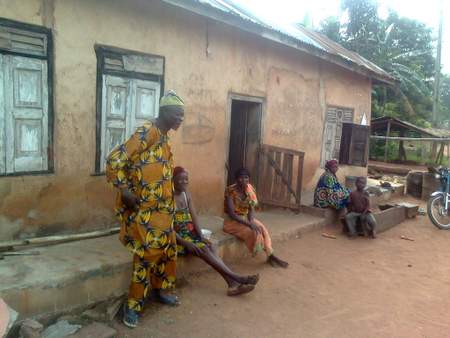First, let me explain what Poverty Cycle means in layman’s terms.
For Instance, A maize farmer cultivates a hectare of land for Maize production.
The maize matures in 3 to 4 months
The estimated cost of production – ₦300,000 (land preparation, planting, weeding (3-4times), harvesting, threshing, etc., MINUS the cost of leasing or purchasing the land)
Yield – 4 tons per hectare (The yield range between 2 – 8 tons often depends on many factors). Just an assumption for now.
Current Market price: 25,000 per 100 kg
2 tons = 2721.55 kg = 27 bags of 100kg = N 675,000
Revenue: N 675,000
Let us substrate production cost of 300,000 thousand naira = 375,000
Profit of 375,000 at the end of 4 months (because we are selling dry).
375,000 divided by 4 = Monthly take home of N 93,750
Considering the fact that agriculture in this part of the world is rainfed production system. Farmer are often limited to 2 production cycle
N 93,750 ($203.63 as of 22 March 2023 22:30)
This cycle is exactly what the rural farmers have been repeating for years. If you divide the profit from 2 production cycles by 12, you get N 62,500 monthly. And in reality, they often do not meet this target for several reasons; high labor cost, cattle invasion/herders, unpredictable weather conditions, and low soil fertility because they cannot afford high cost of fertilizer.
This has been a major challenge over the years, but they never stop farming because farming is a Profession to them, and they keep on repeating the cycle year-in-year-out. This cycle is what I refer to as Poverty Cycle.
I think you clearly understand what the term Poverty Cycle means.

The poverty cycle in agriculture is a common problem in many developing countries, including Nigeria. This cycle occurs when farmers already living in poverty have limited access to resources and opportunities, resulting in lower yields, lower incomes, and a continuation of poverty from one generation to the next. However, there are several ways to break this cycle and help farmers achieve greater prosperity.
- Access to finance: One of the main barriers for farmers to increase their productivity is the lack of access to finance. Providing credit facilities, insurance and other financial services to farmers can help them to purchase high-quality inputs, modern equipment, and other resources needed for their farms.
- Improved technology and modern practices: Access to improved agricultural technology and modern farming practices can help farmers to increase their productivity and efficiency. This can be done by providing training, education and extension services to farmers, which can help them to adopt new technologies and farming practices that can lead to higher yields.
- Market access: Another important factor in breaking the poverty cycle in agriculture is ensuring farmers have access to markets where they can sell their products. Farmers should be provided with market information and market linkages to help them to sell their products at fair prices.
- Diversification: Promoting diversification of crops and livestock can help farmers to reduce their risk and increase their income. Diversification can be achieved through crop rotation, intercropping, and other practices that promote the production of multiple crops.
- Infrastructure development: Building infrastructure such as roads, storage facilities, and irrigation systems can help farmers to improve their access to markets and other essential resources needed for farming.
In conclusion, breaking the poverty cycle in agriculture requires a multi-pronged approach that involves addressing several factors such as access to finance, improved technology and modern practices, market access, diversification, and infrastructure development. These interventions can help farmers to increase their productivity, reduce their risk, and improve their income and livelihoods.



